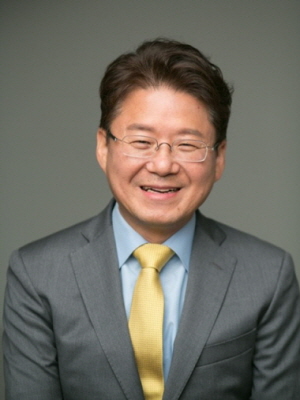배터리 가격 절감 각종 신기술 요구 비용 커
단품·내구성·전동화·공간 확보 등 조건 필요

전기차의 최근 화두는 반값 전기차라고 할 수 있을 것이다.
작년 후반부터 전기차 판매가 주춤한 이유는 바로 전기차의 가성비가 하이브리드차 대비 떨어진다는 것이고 각종 부족한 조건 중 가장 핵심이 바로 전기차의 가격적 조건일 것이다.
즉 반값 전기차의 구현은 결국 내연기관차와 같은 가격대를 유지한다는 뜻으로 이를 위한 각종 신기술 개발과 공정상의 비용을 줄여서 낮은 전기차 가격을 맞추는데 초점이 있다고 할 수 있다.
이를 위해서는 낮은 배터리 가격은 기준으로 각종 신기술이 요구되는데 가장 핵심적인 게임체인저 기술이 바로 전기차용 다단 자동변속기의 개발이라 할 수 있다.
지난 수년간 필자는 다양한 매체를 통하여 전기차의 자동변속기 필요성을 언급하였고 실제로 최근 변속기를 탑재한 양산형 전기차가 출시되면서 그 필요성은 더욱 부각되고 있다고 할 수 있다.
전기차용 변속기 개발에는 필수적인 조건들이 많이 있는 만큼 쉽게 적용하기 어렵다고 할 수 있다.
특히 이동으로 인한 안전성이 가장 중요한 요소인 만큼 운행 도중에 고장 등으로 문제가 발생할 경우 치명적인 문제가 발생하는 만큼 내구성은 기본적인 조건이라 할 수 있다.
기본적으로 5년, 10만Km는 기본적인 전기차 무상기간으로 중요한 의무이기 때문이다.
아마도 전기차에 안착되기 위해서는 개발을 해놔도 실질적인 테스트를 고려하면 수년이 소요될 것으로 예상된다.
특히 전기차는 향후 모듈형태로 장착되면서 변속기도 모듈형태로 진행될 가능성이 커서 하나의 형태로 구성된 시스템이 구축된다고 할 수 있다.
즉 단품 형태의 변속기 시스템으로 구축되어야 한다는 것이다.
물론 이미 전기이륜차용 7단 자동변속기를 개발한 한국의 벤처기업의 경우는 이미 많은 테스트를 여러 제작사에서 진행하여 양산형으로 공급될 만큼 일반 전기차에의 적용은 생각 이상으로 기간이 많이 소요되지 않을 가능성이 있다고 할 수 있다.
이미 중국 제작사에서도 국내 개발한 변속기를 보고 2∼3년 이내에 일반 전기차에 실제로 탑재하겠다고 단언하는 만큼 생각 이상으로 빠르게 등장할 가능성이 크다고 할 수 있다.
이미 테슬라를 필두로 반값 전기차 화두를 글로벌 시장에 던져놓은 만큼 누가, 얼마나 빨리 고단 변속기를 비롯하여 각종 신기술로 전기차 가격 하락과 고효율을 만족시키는 가가 중요한 관건이 될 수 있다고 할 수 있다.
이미 중국산 전기차는 기존의 부정적인 이미지를 버리고 BYD를 중심으로 최상위의 전기차 품질과 가격 경쟁력을 갖기 시작한 만큼 가장 먼저 글로벌 전기차 리더로서 성장할 가능성이 크다고 할 수 있다.
미래 전기차의 퍼스트 무버는 토요타나 폭스바겐 등의 기존 글로벌 제작사보다는 보다는 중국산이 선도할 가능성이 커지고 있는 상황이어서 더욱 전기차에의 자동변속기 적용은 중요한 전환점이 될 가능성도 점쳐지고 있다.
중국에서는 초기의 약 500개의 전기차 제작사가 가격 경쟁력이 높아지면서 최근 50여개 정도로 줄었고, 미래에는 약 10개 미만이 될 것으로 예상될 정도로 치열하게 전개되고 있는 상황이다.
그 만큼 글로벌 타제작사 대비 중국 내에서 경쟁력이 높아지는 부분은 미래에 더욱 경쟁력 제고로 선도적으로 갈 수 있는 조건을 갖춘다는 것이다.
전기차에 탑재되는 자동변속기의 또 다른 조건은 전기차의 구조적인 부분이 유압을 멀리하고 전기에너지를 기본적으로 사용하는 특성상 전동화가 기본일 것이다. 특히 모터와 직접 연결되는 구조상 공간적으로 확보할 수 있는 영역이 많지 않다는 것이다.
특히 전기차는 보편적인 일반형의 경우 하나의 모터만을 사용하고 어느 정도 성능이 필요한 모델에는 2개의 모터를 사용하는 만큼 각각의 모터에 변속기를 어떻게 연결하는 가도 중요한 과제라 할 수 있기 때문이다.
여러 가지 방식이 도입될 가능성이 크지만 해당 벤처기업이 제시한 각 축에 홀짝 형태로 장착하는 방법도 좋은 방법일 것이다.
어떠한 방식이어도 결국 공간 확보를 위한 방법을 고민하고 특히 전기차 전용 플랫폼 설계에서 가장 최적의 상태를 찾아야 한다는 것이다.
좁은 공간에서 모든 변속을 이행하고 바퀴로 전달되어야 하는 만큼 연구개발에서 차지하는 조건은 매우 까다롭다고 할 수 있다.
즉 공간이 적다는 것은 부품수가 그리 많지 않으면서 유기적으로 다단으로 동작되는 새로운 특성이 요구된다고 할 수 있다.
공간과 부품 수는 물론 가격도 고민되는 모두가 장점으로 무장된 변속기이어야 한다는 뜻이다.
최근에는 반값 전기차가 화두가 되면서 장착되는 자동변속기의 가격도 변수라고 할 수 있다. 얻는 효율과 각종 장점이 있어도 결국 비용이 높으면 전기차의 가격도 크게 높아지는 만큼 그림의 떡이 되기 때문이다.
결국 변속기의 가격을 경제적으로 구현하는 조건은 앞서 언급한 각종 조건과 함께 핵심적인 조건이 된다고 할 수 있다.
또 하나의 특성은 당장은 기술적 개발단계로 여러 모델이 출시되면서 다양성이 크다고 할 수 있으나 중장기적으로는 보편타당성이 큰 오픈형 기술이 될 가능성도 있다고 할 수 있다.
 전기차의 최근 화두는 반값 전기차라고 할 수 있을 것이다.
전기차의 최근 화두는 반값 전기차라고 할 수 있을 것이다.